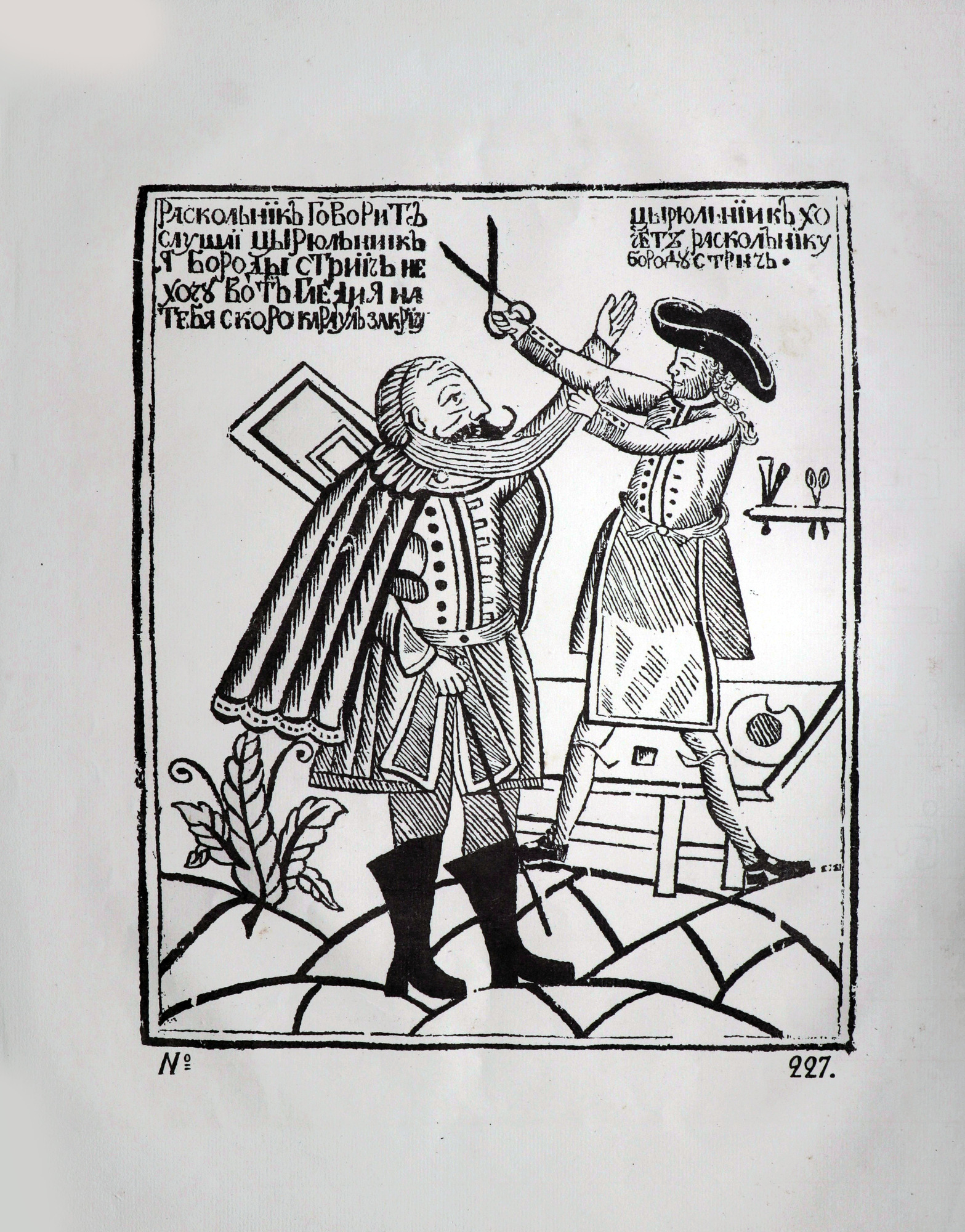On January 16, 1705, the tsar’s decree “On shaving beards” was issued in Russia. According to this document, everyone, “except priests and deacons”, was obliged to shave their beards, and in case of refusal pay a fee to the state treasury. At the same time, a large batch of “beard signs” was issued — copper tokens the size of a kopeck (in the 1725 batch they were diamond-shaped) with the inscription “Money taken”. These badges were given as a token that the right to wear a beard was honestly paid for.
Merchants of the first guild had to pay the highest fee — one hundred rubles “per chin” — if they wished to keep their familiar appearance. Peasants were subject to a duty of two rubles, but it was levied each time they crossed the city border in any direction. Less important merchants, policemen, coachmen and miscellaneous townspeople occupied the in-between position.
Some historians consider the decree on maintaining the European appearance to also be a clever way to replenish the treasury after military expenses.
In 1722, Peter established a single “beard price” (50 rubles) for all estates, with the exception of “arable” peasants, deacons and priests. In addition, those who still did not want to shave were now supposed to go exclusively in old-style clothes — zipuns with red upright neck collars, feryazes and odnoryadkas (all three are long traditional robe- or coat-like garments). Those who were seen dressed improperly in public paid a fine to commandants and orderlies, and in addition, their “illegal” costume was confiscated.
The Old Believers and the schismatics resisted the innovations most stoutly. The lubok print on display deals with the subject of the confrontation of the Old Believers and Peter’s reforms — the clash between the old and the new. Its characters are an Old Believer dressed “according to the law” and a shaved barber dressed in a European manner, in an apron, with huge scissors. The depictions, in true lubok fashion, are exaggerated and accompanied by explanatory text.
Dmitry Rovinsky believed that this print could have been commissioned by Peter himself, as it was a good way to “ridicule the stubborn schismatic” in a manner that could easily be understood by regular folk.
The beard decree of 1722 was abolished only under Catherine II. However, beards came back into style only when Emperor Alexander III the Peacemaker brought them back by wearing one.

